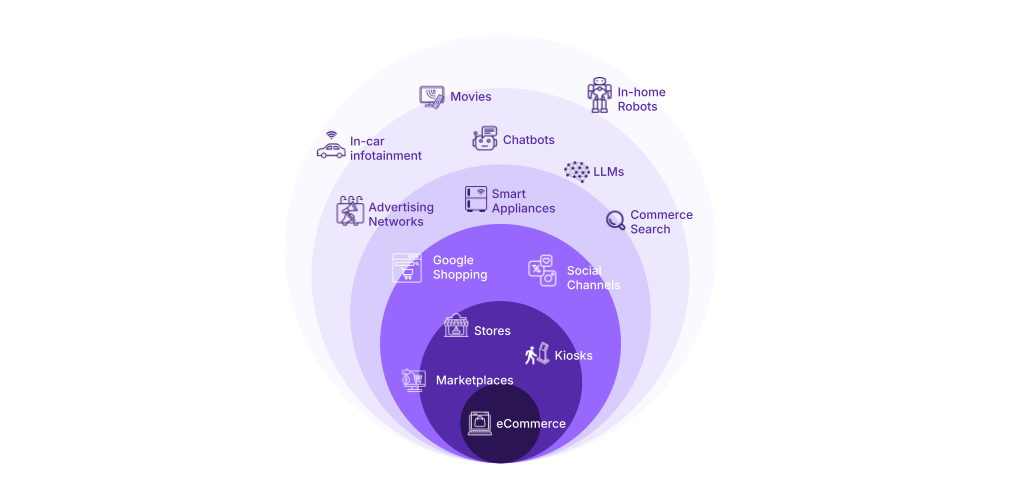Everything is connected. Or feels like it is. Right? We live in the age of the internet of things (IoT). But in the enterprise world, all too often, data sits in silos. It’s disconnected. And it’s really hard to pull together in a way that helps people do their jobs. In this article, we’ll explore a topic less sexy than the IoT, but still just as important for the enterprise. Inventory availability data. Why?
Because all too often it sits in an ERP. And ERPs aren’t very good at sharing data with other systems. Batch file extracts are clunky. Require a pull. And often only include a full data refresh rather than just deltas. Which means, many other systems and people across your business can’t take advantage of that data to help them be more efficient in their role. Let’s look at 5 of them.
1. Demand Forecasting
This might seem obvious. And some of you may even say that your ERP sends inventory positions to your demand forecasting solution. Which it will. But ERPs are only good at sharing inventory availability at a particular moment in time. Meanwhile, modern demand forecasting solutions use Artificial Intelligence (AI) models to optimize their forecasts. So they are hungry for more granular inventory movement data. They want to understand how inventory availability fluctuates across your fulfillment network throughout the day. Because it can help them further optimize their demand forecasts. Which means you can improve your inventory placement and reduce inventory carrying costs. Plus, optimize your replenishment strategy to further increase inventory turns.
2. Product Information Management (PIM)
Imagine you’re a product information manager. You live your life inside a PIM. Reviewing product information. Trying to improve it. But how do you prioritize your work each week? Where do you start?
Now imagine if your PIM could show you how much inventory you had available for each item. How many units had sold in the past week? Whether that number had gone up or down? How would that help you prioritize your efforts?
You wouldn’t waste time on products that were already selling well. You could focus on slower moving items. To boost conversions.
3. Email Marketing Solutions
When it comes to email marketing, personalization is key. You need to send emails that reflect a customer’s past purchases, recent shopping carts, and maybe product reviews. But what if they could also factor in what’s available locally? Or that an item previously browsed is now back in stock? How would that impact conversion rates? Or increase basket size?
4. Digital Ad Platforms
Ever seen an enticing ad, only to click and find the item is no longer available? What a waste of ad spend. And a bad customer experience. In the marketing world the word ‘inventory’ typically refers to ‘ad inventory’, or all the places you can display an ad rather than physical stock. But wouldn’t it be great if buyers of digital ad inventory were able to factor in physical inventory availability? That way you could avoid those moments of disappointment. And, optimize your marketing spend for overall business outcomes. How? By moving away from the more traditional ‘Return On Ad Spend’ (ROAS) metric, to the more strategic, ‘Increase Inventory Turns’.
5. Commerce Search
While commerce platforms typically have cached inventory data, stand alone commerce search engines (provided by vendors like Algolia, Bloomreach, Constructor, and Coveo, just to name a few), are often overlooked. Or they get inventory availability from the commerce platform. Which is stale and out of date. But what if you could provide your commerce search solution with an ‘easy to consume’ stream of inventory availability data? That way, they could optimize search results based on what’s in stock (or what’s in stock locally to the customer). The upside? You’ll improve your ‘add to cart’ rate and conversion rates.
So if all these systems could benefit from inventory availability data, what’s the best way to share it?
Fluent Big Inventory: The easy way to share inventory availability data
Fluent Big Inventory is an enterprise inventory hub. What can it do? It was specifically designed to help you easily share inventory availability data with other systems. Like demand forecasting, PIM, email marketing, digital ad platforms, and commerce search. What’s more, you can customize which data you share, and control how often you push it to those systems.
Summary
It’s time to say goodbye to data silos. And share accurate inventory availability data shared across all your systems. That way you can take your business optimization to the next level, and drive more sales.
To learn how Fluent Big Inventory can help you share inventory availability data across your organization and beyond in as little as 8-12 weeks, contact us today.



